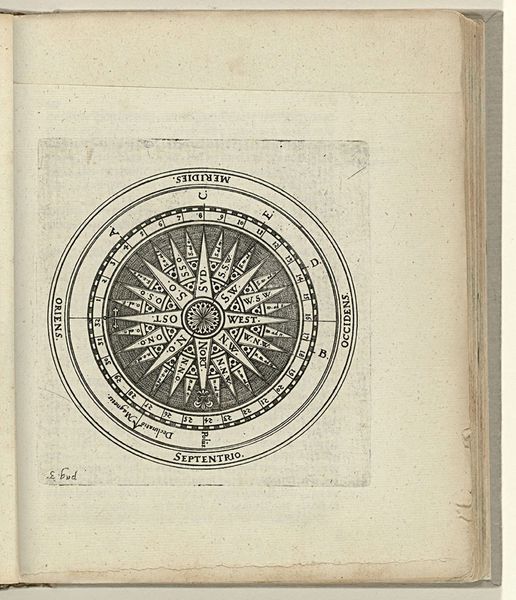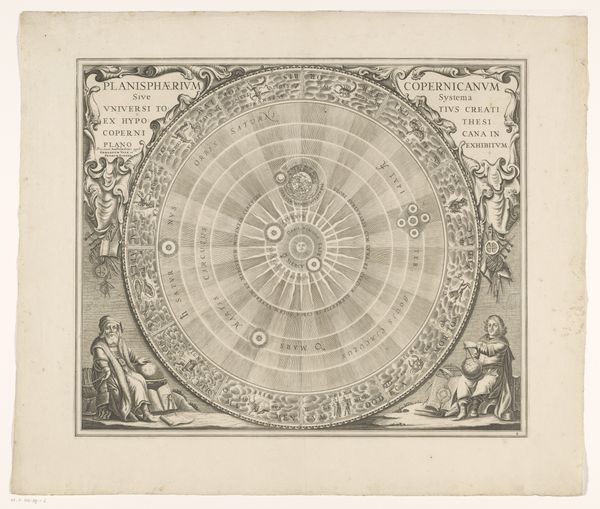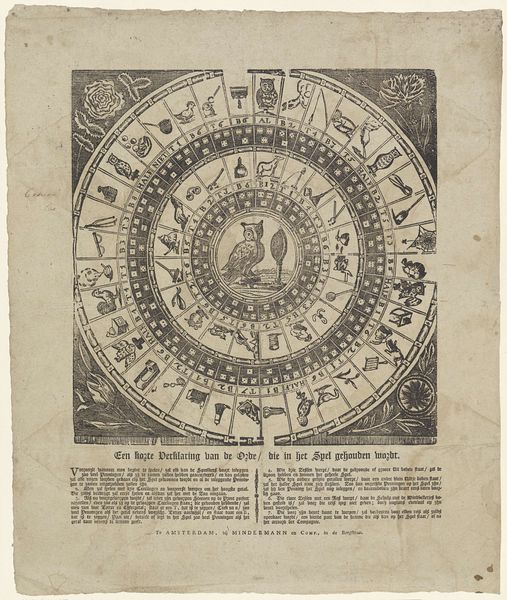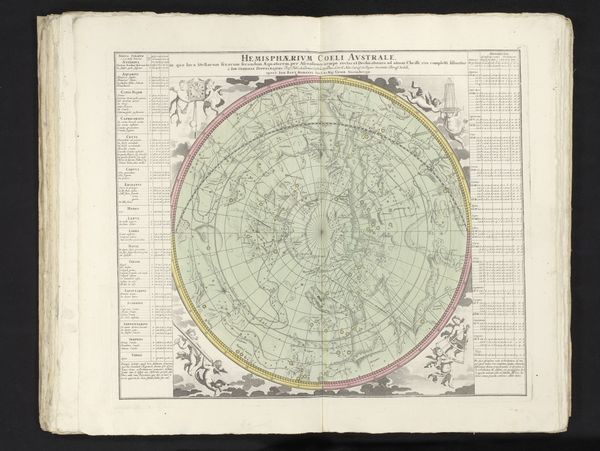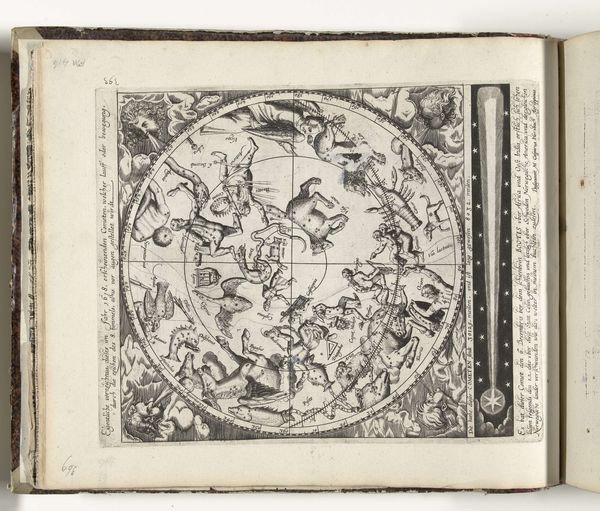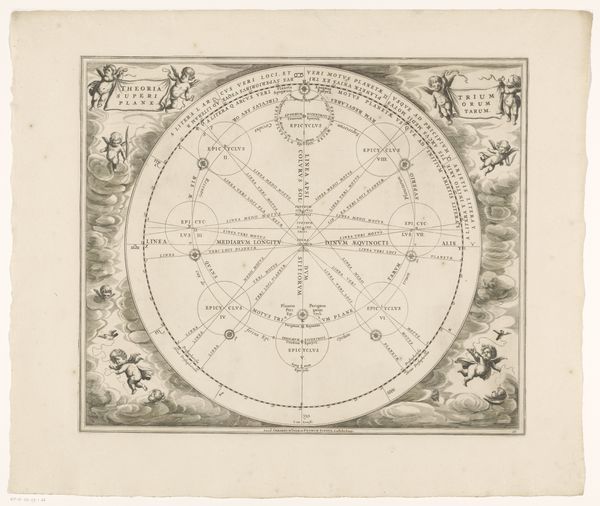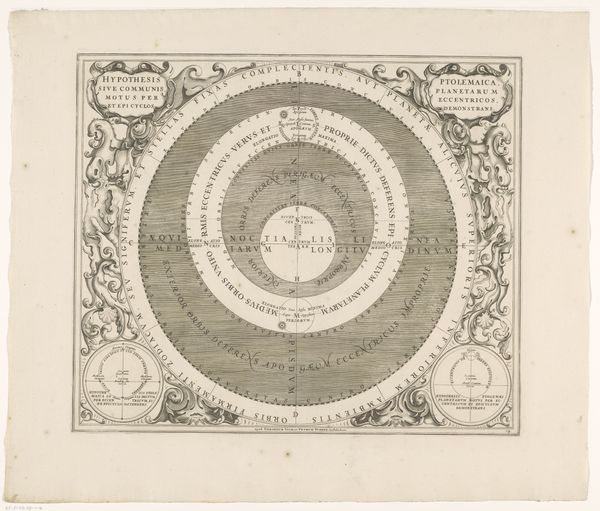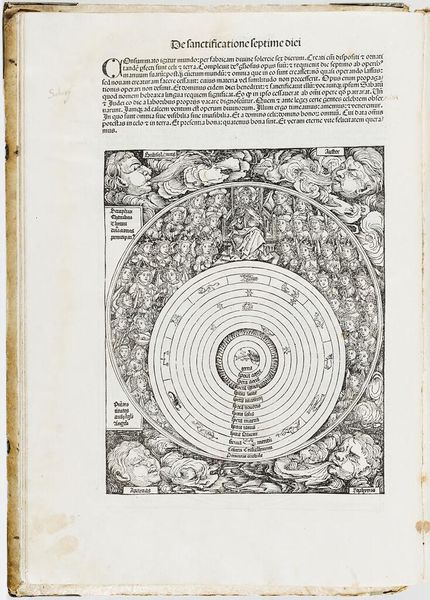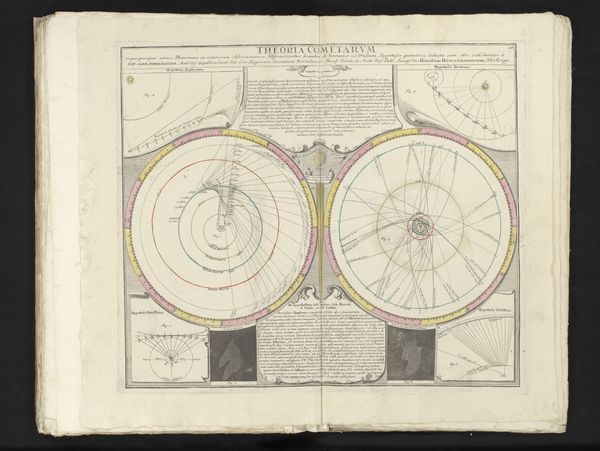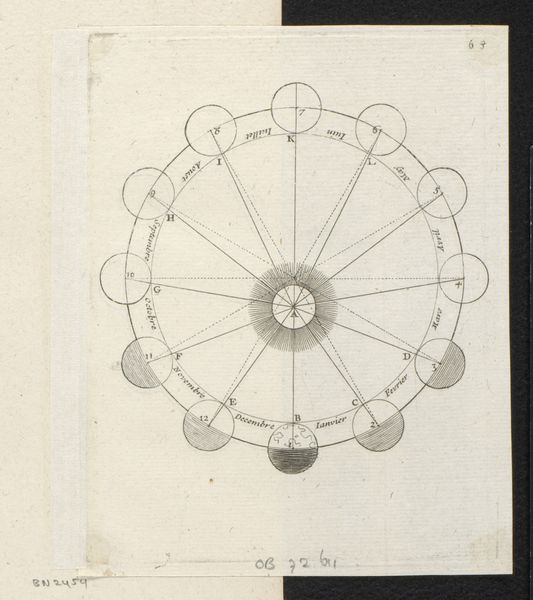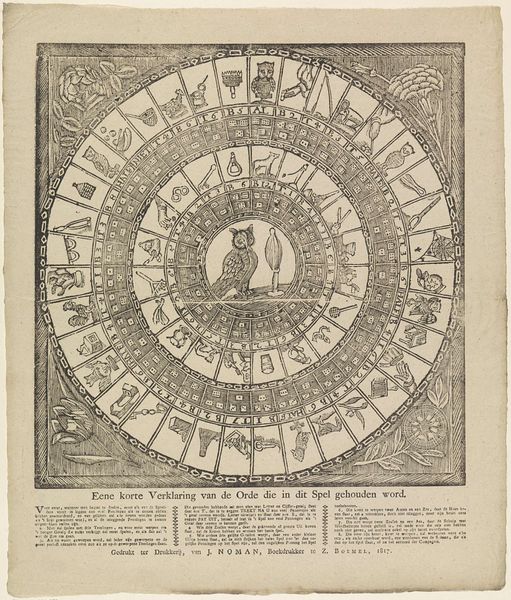
graphic-art, print, paper, ink, engraving
#
graphic-art
#
medieval
# print
#
paper
#
11_renaissance
#
ink
#
geometric
#
line
#
history-painting
#
engraving
#
calligraphy
Dimensions: height 105 mm, width 145 mm
Copyright: Rijks Museum: Open Domain
Curator: Here we have a fascinating piece of graphic art titled "Windroos," created anonymously around 1598. It's currently held here at the Rijksmuseum. Editor: My first impression is that this work feels precise, yet strangely whimsical. The geometric lines of the wind rose itself contrast with the more decorative, almost playful embellishments at the corners. It has a slightly morbid feeling thanks to that little skull. Curator: Absolutely. Considering the materials - print on paper using ink and engraving techniques - we can delve into the world of Renaissance cartography and printing practices. The paper itself, the specific inks used, the labor involved in engraving such precise lines... all speak volumes about the means of production. This wasn't just art; it was information, carefully crafted and disseminated. Editor: True, and that information is visually encoded. Beyond just directional labels, there's a deeper symbolic language at play. Look at the sun and skull. These weren't just ornamentation; they held potent symbolic value related to mortality and life’s journey, deeply ingrained in the visual culture of the era, especially related to voyages. They appear to remind us that journeys have endings. Curator: I’m particularly struck by the calligraphy. Each letter seems deliberately formed, contributing to the overall sense of order. Analyzing the various wind names and their derivations would tell us more about global awareness during that time. Each represents accumulated knowledge and material conditions that made such global exploration possible. The printing technology, of course, amplified that reach. Editor: Yes, and tracing those names unlocks stories of exploration, trade, and cultural exchange—a snapshot of the world as they knew it. Consider the psychological weight of navigation, represented by this blend of artistry and utility. A small guide holding huge implication! Curator: Examining the paper and the ink closer might even reveal more about where this particular print was created, which workshops were active, and how they were sourcing their materials. Editor: Indeed, each perspective opens a deeper appreciation. The blend of practical navigation tool with deeper visual metaphors makes this object fascinating! Curator: Looking closer at the details has me contemplating this object's place in early globalization. Editor: And for me, it's prompted further reflections on the emotional landscapes contained within even seemingly simple maps.
Comments
No comments
Be the first to comment and join the conversation on the ultimate creative platform.
